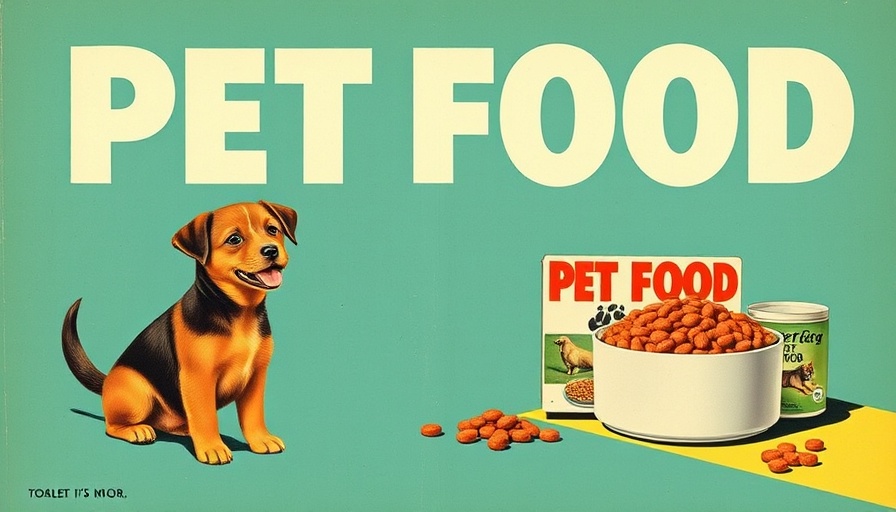
Recalling Pet Food Marketing Techniques Through the Ages
Pet food marketing has a rich history that reflects changing consumer perceptions, product ingredients, and advertising techniques. In the early 20th century, companies cleverly used strategies that not only promoted their products but also tapped into the emotional connections pet owners have with their animals. For instance, in the 1920s, Pooch Dog Food lured customers with a striking offer: send in 24 can labels, and receive six stylish metal coasters or ashtrays. This was a clever way to engage customers, subtly promising rewards for brand loyalty while advertising their products as a staple for beloved pets.
How Ingredients Have Evolved Over Time
On the ingredient front, the evolution has been just as noteworthy. The Chuck Wagon dog food ad from Purina touted “meat-like” chunks that transformed when water was added, promising dogs a taste experience that mimicked real food. Purina didn't shy away from stating that quality comes with a price, implying that the better the product, the higher the cost. Originally marketed for a higher class of dog food, this product set the standard for premium pet nutrition, even during an era when the perception of dry food was mixed.
Controversial Ingredients and Sourcing Practices
Meanwhile, brands like Friskies, which now caters predominantly to cats, were once centered on dog food that contained horse meat — a highly debated ingredient. The advertising claims emphasized that their product contained “twice as much nourishment” as competitors, which spoke to the growing trend among pet owners of seeing their pets as family members deserving of high-quality food. Despite contemporary backlash against questionable ingredients, these marketing gambits reflected a clear understanding of consumer desires for quality and value.
From Gravy to Gains: Unique Food Features
The advertising around Gravy Train illuminated pet food's evolution further, as the promotion of adding gravy to a dry dog food highlighted their unique product feature in a world dominated by dry kibble. This innovation not only enhanced flavor but also targeted pet owners’ emotional connections with their pets who they wanted to treat and please.
The Power of Branding: Celebrities and Recognition
Brands like Hill's have made significant strides in pet nutrition over the years. Their dog food labels historically revealed a composition that some might find unsettling but underscored the shift in marketing tactics. By publicly embracing ingredients that were “inspected and passed,” they instilled trust in their customers, which was essential in building a strong brand reputation. Furthermore, Purina capitalized on popular culture by linking their dog bowl to famous television shows like 'Leave It To Beaver,' illustrating how aligning products with positive public sentiments can amplify brand visibility.
Modern-Day Connections: Learning from the Past
As the pet food market continues to mature in response to consumer demand for healthy and natural products, many of yesterday’s marketing tactics remain relevant. The trend towards transparency in ingredient sourcing, as seen in Puss ‘n Boots cat food ads that claimed to use real fish, demonstrates a continuing focus on customer education. Today's brands are learning from their predecessors while adapting to current consumer concerns for ethical practices, such as sustainability and nutritious ingredients.
What Can We Learn from Vintage Advertising?
The historical backdrop of pet food advertising is a fascinating journey through marketing psychology, customer engagement, and ingredient evolution. From showcasing the significance of unique features like gravy-enhanced kibble to incorporating scientific elements in advertising, there’s much to learn about consumer inclinations. Ultimately, these marketing messages shaped the industry, lovingly crafting an image of pets as essential family members, deserving of the best possible care and nutrition.
As we move forward in the world of pet care, it's essential to reflect on past practices and continue to strive for transparency and integrity in the pet food industry, ensuring our pets get the nourishment they deserve.
 Add Row
Add Row  Add
Add 


Write A Comment